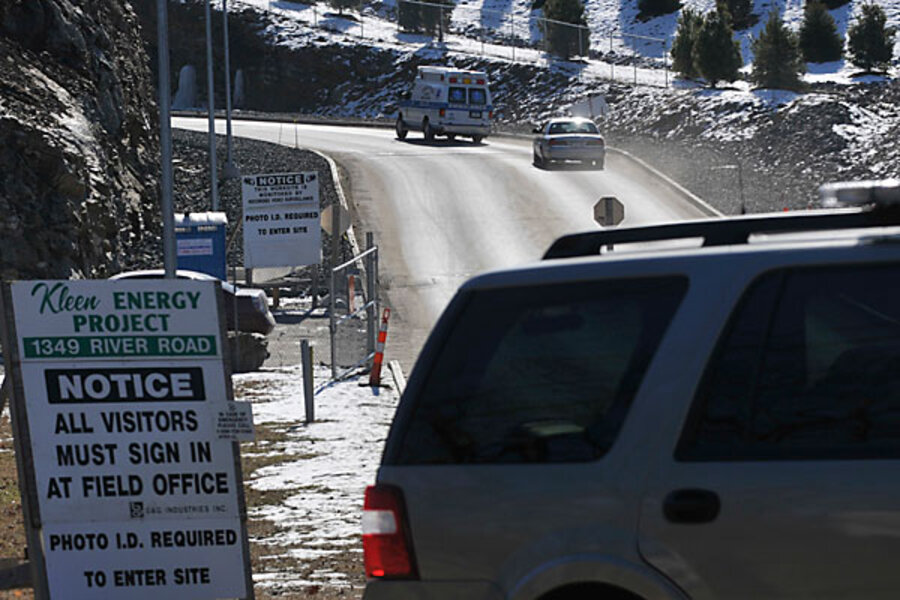Gas-pipe purging linked to seven big explosions since 1997
Loading...
The purging of natural-gas lines is likely to be an early point of inquiry for federal investigators looking into Sunday's fatal explosion at a power plant in Middletown, Conn., given that the process is linked to at least seven major explosions since 1997 that caused numerous injuries and deaths, federal documents suggest.
Workers at the Kleen Energy Systems plant were reportedly purging gas lines at the time of the explosion, police and local officials told news outlets. Natural-gas lines are purged to remove air from the pipes before natural gas begins to flow through them, because air-fuel mixtures can be explosive.
Even before investigators from the US Chemical Safety Board (CSB) determine a cause, board officials have been working to persuade organizations that set safety standards to change safety codes governing gas-line purging nationwide.
“The CSB has no enforcement authority to make these changes,” says Sandy Gilmour, a CSB spokesman. “It’s an advocacy process.”
Where to vent pipes
The Chemical Safety Board, a federal investigative body, had recently criticized safety codes for installing natural-gas systems in industrial and other facilities. Such “voluntary consensus codes” – developed by the National Fire Protection Association (NFPA), the American Gas Association, and the International Code Council (ICC) – are usually adopted as regulations by states and localities nationwide, the CSB noted in recommending certain reforms.
One major CSB criticism: Today’s code practices strongly recommend – but don't require – that gases from lines being purged be vented outdoors instead of into confined spaces or indoors.
The National Fuel Gas Code (issued by the NFPA) and the International Fuel Gas Code (issued by the ICC) describe, in identical wording, recommended practices for purging fuel-gas systems of air and for venting those purged gases. They recommend that: “The open end of piping systems being purged shall not discharge into confined spaces or areas where there are sources of ignition unless precautions are taken to perform this operation in a safe manner by ventilation of the space, control of purging rate, and elimination of all hazardous conditions.”
Just last week, feds made their case for tougher codes
Officials of the National Fire Protection Association just last week heard CSB members make their case for tougher codes governing the purging of natural-gas systems. NFPA says its roughly 300 codes and standards are “developed through voluntary consensus” of experts.
“We’re going to hold off on commenting about specific codes at this point because we don’t know enough about what happened down there" in Connecticut, says Lorraine Carli, a NFPA spokeswoman, in response to questions about the status of CSB recommendations for stronger requirements on purging gas lines. ICC officials had not returned calls at time of writing.
NFPA and ICC codes “do not explicitly require” purged gases to be vented outdoors, away from personnel and ignition sources “even where it is feasible to do so,” the CSB says. That finding was among the 40 “urgent recommendations” the board has made to address the threat it says is posed by purging gas lines indoors or in constrained spaces.
Current codes also do not define “adequate ventilation or hazardous conditions,” nor do they require evacuation of nonessential personnel during purging of fuel gas lines if the gas must be vented into the building, CSB recommendations say. Neither do they require combustible gas detectors near open vents where gases are purged, the CSB says.
“Those recommendations by the safety board and any others will be considered by the technical committee … at the end of February,” says NFPA’s Ms. Carli.
----
Follow us on Twitter.





